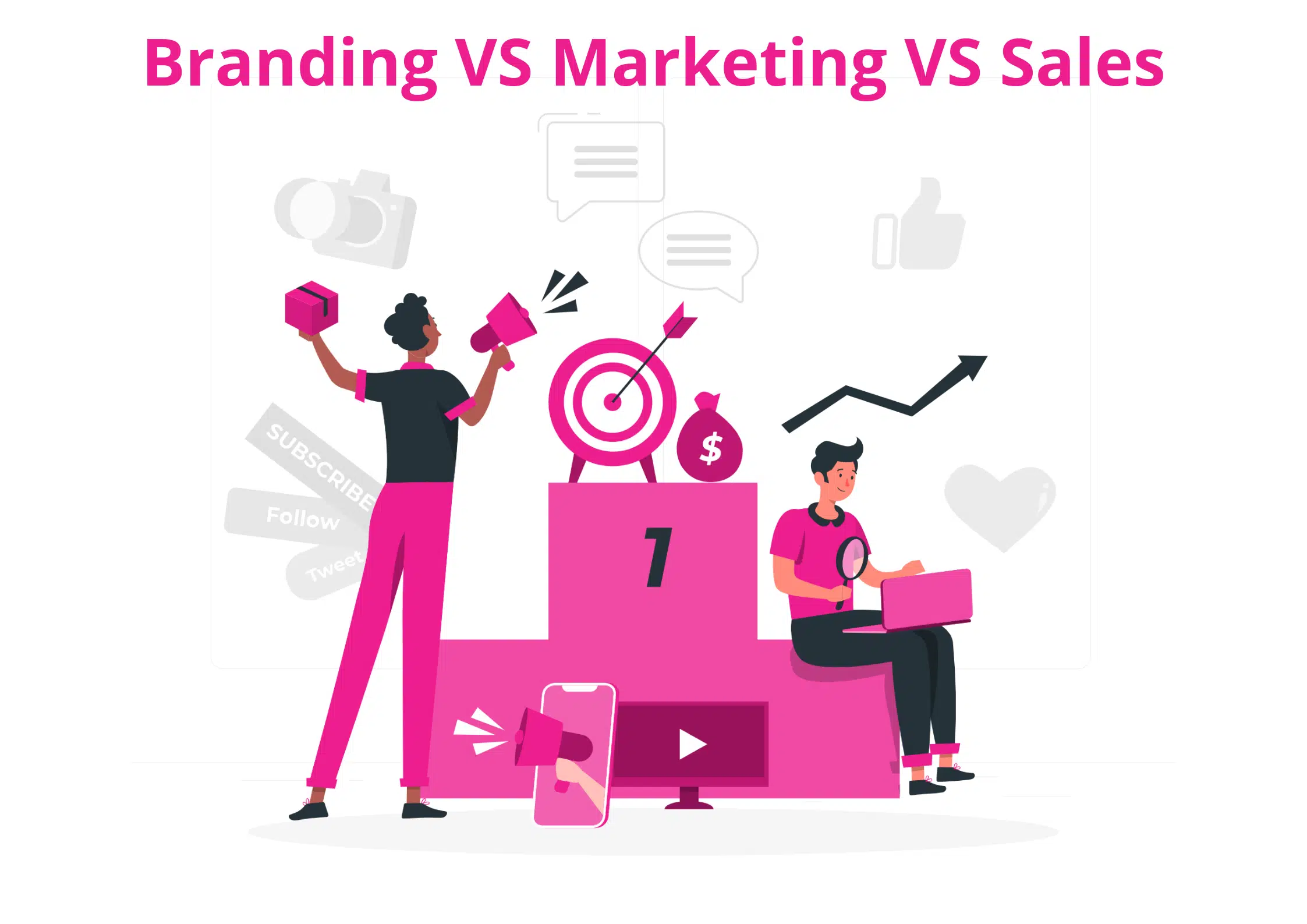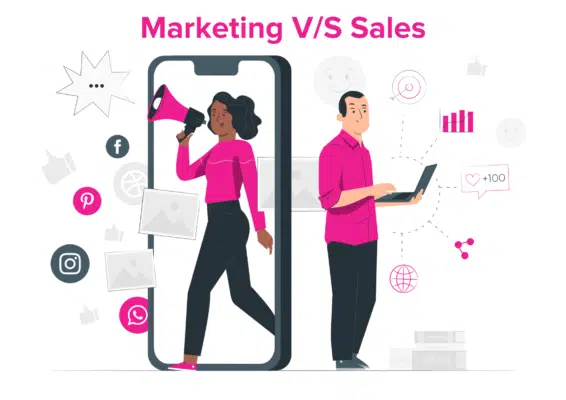This article was contributed by Martin Gessner.
There are so many terminologies to learn when running a business that it can get a little confusing at times.

There are three terms, in particular, that often get mistaken: branding, marketing, and sales.
It’s easy to get lost in the semantics as they all exist to attract customers and eventually drive sales.
However, they are distinct concepts that serve different functions and have individual goals.
What is branding?
Branding, for instance, is the process of shaping the image of a company in the minds of customers.
What is marketing?
On the other hand, marketing encompasses all the activities you undertake to promote a product, service, or company.
What is sales?
Meanwhile, sales is the process of “selling” goods or services. It is any activity or a set of activities that turns leads into customers.
This article will walk through some of the main differences between these three terms in more detail.
Branding VS Marketing
Whats’s the difference between branding and marketing?
Branding and marketing share similar objectives. They overlap but are fundamentally different.
Your brand is your company’s identity. A major element of branding involves defining what you want to be known for and then delivering on those expectations. For example, you might decide that you want to be known as honest. That’s great. But how will you deliver on that trait?
The answer is that you need to make that a key trait of your business operations. For a company, creating the impression that you are honest and reliable might involve:
- Always admitting when you made a mistake
- Providing transparent pricing
- Not charging a consumer when you don’t provide the service
- Highlighting how honest the company is in all your marketing material
- Having competent customer service staff who can handle upset customers
If you complete all of these tasks, you can establish your company as reliable in the eyes of consumers. That’s where branding turns into brand management.
The second element of branding, which most people are familiar with, is visual branding. Visual branding involves the visual elements of your company. The visual elements of a company include the logo, your color scheme, the fonts you use in all your sales and marketing materials, etc.
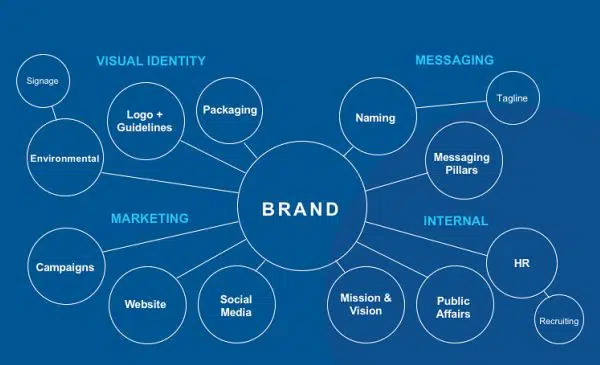
In contrast to branding, marketing encompasses all of the activities you conduct to promote your company. So, the content you release on social media, the blog posts you create, the videos you produce, etc.
The goal of marketing is to grow and engage your audience. Your marketing strategy will play an important part in how people perceive your brand. A great example of how your marketing efforts can influence brand perception comes from the social media team at Wendy’s fast-food chain.
The social media team is known for its sense of humor. They like to make a lot of jokes. That rubs off on the company. If you ask people what they think of Wendy’s, many people say they’re a funny company.
1. Branding builds loyalty, marketing drives sales
A great marketing campaign attracts customers and encourages them to purchase a company’s products or services. Your branding impacts everything that happens after they arrive in your online or offline store. The customer experience, which should be an outcome of a coherent brand strategy, plays a significant role in customer retention.
Continued marketing efforts help maintain the presence of your company in the minds of your audience. Yet, the best marketing campaigns will fail to generate sales if your service sucks.
According to an article by CrowdSpring, 77% of consumers make purchases based on a brand name.
This trust and repeat purchases generated by strong branding efforts can eventually foster customer loyalty and ongoing sales. After all, the probability of selling to an existing customer is between 60% and 70%.
2. Branding is long-term. Marketing strategies change
Your company branding is part of a long-term business strategy. You establish what you want to be known for and work hard to create that association with your audience.
That long-term approach to cementing your reputation is called brand management.
Brand management involves making sure that your business is known for those positive traits that you want to promote. Unfortunately, that often means getting on top of those negative associations customers have with your company. For example, slow customer service or products that continually break.
Over time you’ll make tweaks to your brand. For example, you might update the logo or color scheme. These minor updates are often referred to as a brand refresh.
Companies like Coca-Cola will do periodic updates to their visual identity. The core product offering stays the same, though.
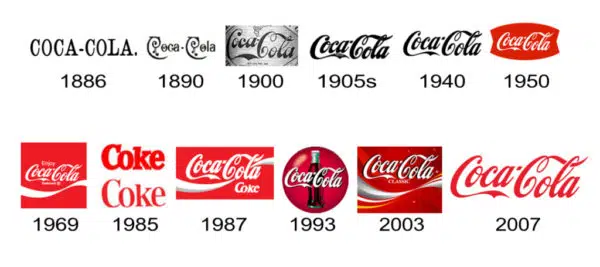
If things go drastically wrong, you might go through a rebranding exercise.
Rebranding is where you try to re-frame your identity with consumers. Amazon has done this a few times as it evolved from an online bookstore to a company that sells everything.
Marketing and sales strategies, meanwhile, change with trends and emerging needs. For example, when Tik Tok exploded in popularity, marketers started using this platform to share content.
The type of content you share through your marketing channels will evolve. However, companies generally try to stick to the same brand messaging.
Marketing VS Sales
Whats’s the difference between marketing and sales?
Now that we’ve discussed some of the differences between marketing and branding, let’s explore sales and marketing, including some of the key similarities and differences.
1. Different, but often overlapping goals
Marketing and sales go hand in hand. While marketing attracts leads into the business, sales converts those leads into paying customers. For some companies, there is no distinction between sales and marketing activities.
Sales and marketing activities are frequently combined in Business to Consumer (B2C) companies, especially if the company operates exclusively online. Some businesses use the term ‘smarketing’, referring to a blend of sales and marketing.
The sales and marketing departments are frequently separated in the Business to Business (B2B) sector. The sales team is responsible for account-based marketing.
Account-based marketing is where a salesperson tries to develop and sell a product or service to a lead. That process of developing a lead can take place over a couple of months, sometimes even a year or more.
The marketing department, meanwhile, is responsible for activities that generate those leads.
2. Separate tools and processes
Marketing and Sales teams can sometimes use the same tools in performing their functions. Both teams often use a Customer Relationship Management (CRM) system to manage data and the company’s relationship with customers.
A CRM helps automate your business processes and allows you to monitor the effectiveness of your marketing and sales efforts. You can also automate certain operations.
Marketing teams tend to use tools and channels, though, which allow your business to target a large audience. For example, your marketing team might promote content online through your social media channels.
Meanwhile, your sales team might use the same channel, but in a slightly different way. For example, rather than sharing a recent blog post through LinkedIn, they might run automated outreach campaigns to generate leads.
Again, the distinction between sales and marketing efforts is most strongly defined in Business to Business companies with separate sales and marketing departments. For many businesses, though, it’s hard to distinguish where sales activities begin and marketing efforts end.
Sales VS Branding
Whats’s the difference between sales and branding?
There is a distinct difference between sales and branding. Branding helps people identify a product or service, while your sales team focuses on converting a lead into a customer. Often, they will hand over that lead to someone from another team once the sale is closed.
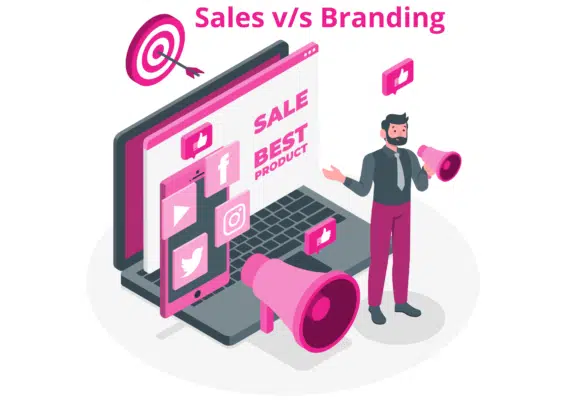
1. Sales is about numbers. Branding is about perception
Most salespeople have hard quantifiable targets. For example, they need to sell X dollars’ worth of products per month. You can track these results and make reasonable sales forecasts using the data you already hand. On the other hand, branding focuses on the intangibles, such as your customers’ awareness and perception of your brand.
While you can measure brand awareness in terms of website traffic growth or engagement, these metrics aren’t as direct as those you’ll get when measuring sales. If you want to have a fairly accurate picture of your brand performance, you have to look at more than just one metric and connect the dots.
2. Sales are short-term. Branding is a long-term strategy
While we often hear from salespeople that sales is a long-term thing, it’s more short-term than you think. Even if the customer journey is long and complicated, it has a definite start and end. Since the sales process is targeted towards specific leads, your sales team focuses on converting the lead.
While the sales process is short-term, brand management is a continuous process that encompasses every aspect of your business operations. You need to monitor customer sentiment and tweak how you operate.
It takes a long time for customers to associate brands with emotions, such as trust or satisfaction. And you can lose that hard-fought reputation overnight with a single mistake.
3. Sales usually follow the branding
The branding process involves finding a brand’s voice or the tone with which brands communicate information about their products and services. While we can expect a few variations in how your sales team members approach each sale, you need to ensure that the brand voice and overall customer experience are the same for each client.
Why is maintaining a consistent brand a crucial part of sales?
Your current and future customers will expect that their experience will live up to the image you’ve built for your brand. For instance, if your brand voice emphasizes excellent customer relations, your customers will end up disappointed if your sales team fails to exhibit that trait while they’re making a pitch or negotiating terms and prices. You might end up losing more than a potential sale as a result.
By emphasizing compliance to branding within your sales team, you ensure that your values are more than just slogans on the office wall.
Branding VS Marketing VS Sales
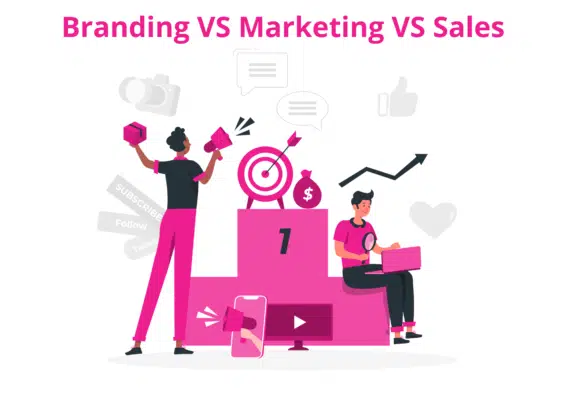
Whats’s the difference between branding, marketing and sales?
Many people outside sales and marketing believe that branding and marketing are the same. While there are differences between and among the three, they are all interconnected to form the customer experience. Instead of seeing them as separate departments, you may think of them as part of the business process cycle.
Your brand is the foundation of your company’s operations. The branding process identifies your company’s core values, gives those values personality, and adds meaning to them. In other words, your brand is the voice you use to communicate your value to the world.
After establishing a strong branding strategy, your marketing team plays a vital role in conveying that messaging to potential customers. The marketing process focuses on increasing brand awareness and helping potential leads realize that your products or services can help them with their needs.
Finally, your sales team will seal the deal by strategically converting leads driven by marketing into customers. They will engage with these customers to discover specific requirements and help them find a product that meets their needs.
All this will circle back to branding’s main purpose: to create a brand that customers will remember and patronize. A company’s brand, distributed through marketing, will help those existing customers come back for more. Once they feel continuously satisfied with the brand, they can potentially become loyal, paying customers.
Whats’s the difference between branding, marketing and sales?
Branding, marketing, and sales often find themselves lumped together because they share the same end goal: to bring in more customers and generate revenue. However, each discipline has its own set of characteristics and processes.
Branding differs from marketing because they produce different outcomes. Branding concerns itself with the “what” of the brand. It aims to build a brand that customers will remember. On the other hand, marketing concerns itself with the “how” by conducting activities that promote brand awareness.
Similarly, marketing and sales strategies and tools are far from the same. They have different scopes. Marketing targets a wide-scale audience while sales targets specific people. Marketing focuses on capturing leads, while sales focuses on converting those leads into customers.
Like sales and marketing, branding and sales also differ from one another because they drive different results. Branding defines your business as the one with the best product and services, while sales tells customers how they can get those products and services.
All in all, these three elements are crucial in any business. They provide different values for a business, but they all work towards a common goal: to give the customer the best experience they can have with your brand.
Branding VS Marketing Summary
Branding and marketing are two important concepts that businesses use to create a lasting impression in the minds of their customers.
While both play a crucial role in the success of a business, they are not the same.
Understanding the differences between branding and marketing can help businesses make informed decisions about their marketing strategies.
BRANDING
The central idea behind branding is to create a unique identity for a business, product, or service.
This includes developing a brand name, logo, and tagline that are easily recognizable and associated with the business.
The goal of branding is to create a strong emotional connection with customers, so they choose the business over its competitors.
MARKETING
On the other hand, marketing refers to the activities and strategies used to promote and sell products or services.
This includes advertising, sales, and public relations efforts. The goal of marketing is to reach the right customers and convince them to buy the product or service.
PROS & CONS
One of the main pros of branding is that it helps businesses stand out from their competitors. A strong brand identity can differentiate a business from others in the same industry, making it more memorable to customers. A well-established brand can also command a higher price for its products or services, as customers are willing to pay more for a trusted and reputable brand.
However, branding can also be a costly and time-consuming process. Developing a strong brand identity requires significant investment in research, design, and marketing efforts. It can also be difficult to change a brand once it is established, as it requires a lot of effort to rebuild brand awareness and customer loyalty.
On the other hand, one of the main benefits of marketing is that it helps businesses reach a wider audience. Through various marketing channels such as social media, email, and advertising, businesses can effectively promote their products or services to a large number of potential customers. Marketing also allows businesses to target specific customer segments and tailor their message to their specific needs and interests.
However, marketing can also be expensive and require a lot of resources. Developing and implementing effective marketing campaigns requires significant planning and budgeting. Additionally, the success of marketing efforts is not guaranteed, as it depends on various factors such as the target audience, competition, and overall market demand.
FINAL CONCLUSION
In conclusion, branding and marketing are both important for the success of a business. While branding helps businesses create a unique identity and establish customer loyalty, marketing helps businesses reach a wider audience and promote their products or services.
It is important for businesses to carefully consider the positives & negatives of both branding and marketing and determine which approach is the most effective for their specific goals and resources.
Author Bio: Martin Gessner is the Founder of Focus on Force. He has spent over 10 years working in various Salesforce roles including business analyst, project manager, consultant and solutions architect.
